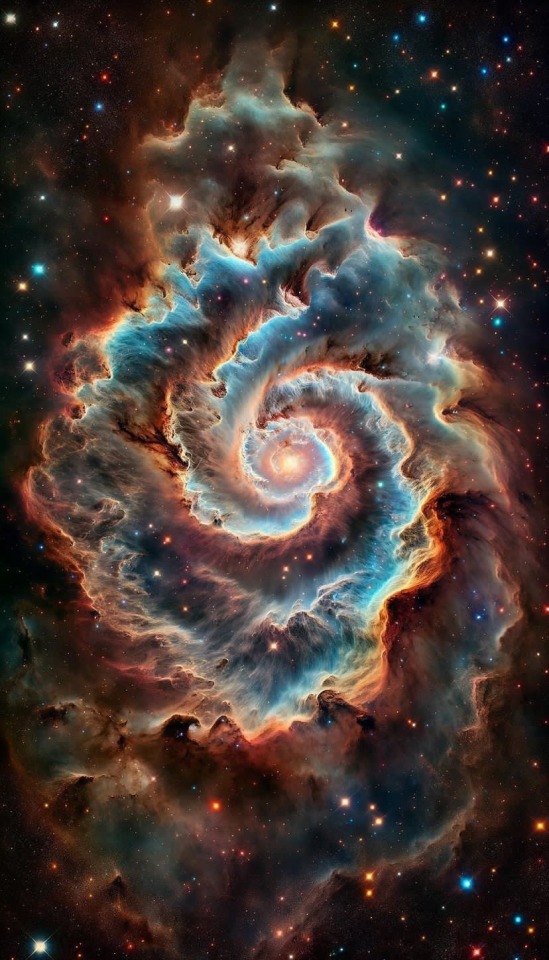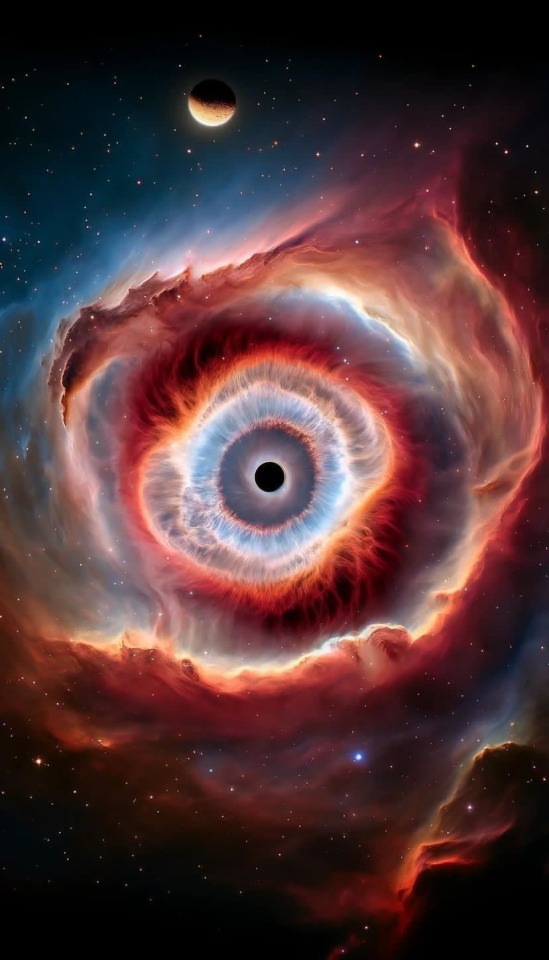Andromeda Galaxy Photo: Chuck's Astrophotography /Twitter: @chucksastropho1

Andromeda Galaxy Photo: Chuck's Astrophotography /Twitter: @chucksastropho1
More Posts from Dukeofwatts and Others

The Horsehead Nebula (Barnard 33, left) and the Flame Nebula (NGC 2024, bottom) // Dale Bush
To celebrate the 25th anniversary of the Chandra X-ray Observatory, NASA has released 25 new stunning images of various cosmic objects.









Dreamy space scapes by Nick Fritz on Instagram







We have tons more of these beautiful images coming!!!

M24, Sagittarius Star Cloud

Prepare for visual overload! Today, 19 images of nearby face-on spiral galaxies by the James Webb Space Telescope were released. This marks the first time we’ve observed these galaxies in high-resolution near- and mid-infrared light. What do they uniquely show?
The galaxies’ clearly defined spiral arms are brimming with millions of stars. Their centers may be filled with old star clusters or active supermassive black holes. And Webb has shown us where stars that haven’t yet fully formed are still encased in the gas and dust that feed their growth, like bright red seeds.
Webb’s new images are part of a large, long-standing project, the Physics at High Angular resolution in Nearby GalaxieS (PHANGS) program, and will be added to images and data from the Hubble Space Telescope, the Very Large Telescope’s Multi-Unit Spectroscopic Explorer, and the Atacama Large Millimeter/submillimeter Array. Now, astronomers around the world can examine these galaxies carefully in ultraviolet, visible, radio—and now near- and mid-infrared light.
Skip to the bottom of the page to look at each galaxy: https://webbtelescope.pub/3SxNSaU
ALT TEXT: Nineteen Webb images of face-on spiral galaxies are combined in a mosaic. Some appear within squares, and others horizontal or vertical rectangles. Many galaxies have blue hazes toward the centers, and all have orange spiral arms. Many have clear bar shaped-structures at their centers, but a few have spirals that begin at their cores. Some of the galaxies’ arms form clear spiral shapes, while others are more irregular. Some of the galaxies’ arms appear to rotate clockwise and others counterclockwise. Most galaxy cores are centered, but a few appear toward an image’s edge. Most galaxies appear to extend beyond the captured observations. The galaxies shown, listed in alphabetical order, are IC 5332, NGC 628, NGC 1087, NGC1300, NGC 1365, NGC 1385, NGC 1433, NGC 1512, NGC 1566, NGC 1672, NGC 2835, NGC 3351, NGC 3627, NGC 4254, NGC 4303, NGC 4321, NGC 4535, NGC 5068, and NGC 7496.

NGC 2359, Thor's Helmet

The Western Veil Nebula, NGC 6960 // Karl-Heinz Macek
The bright star is 52 Cygni which is in the foreground and unrelated to the nebula.
James Webb found a space penguin!!!

Look at the space penguin!
https://webbtelescope.org/contents/news-releases/2024/news-2024-124

JFYI
-
 jinglebellrockstars liked this · 2 months ago
jinglebellrockstars liked this · 2 months ago -
 space-moon-night reblogged this · 2 months ago
space-moon-night reblogged this · 2 months ago -
 koalatattoo liked this · 2 months ago
koalatattoo liked this · 2 months ago -
 mugattuhasgotchu reblogged this · 2 months ago
mugattuhasgotchu reblogged this · 2 months ago -
 a-dream-seeking-light liked this · 2 months ago
a-dream-seeking-light liked this · 2 months ago -
 deeptyphoonengineer liked this · 5 months ago
deeptyphoonengineer liked this · 5 months ago -
 http97 liked this · 5 months ago
http97 liked this · 5 months ago -
 homemathkit liked this · 10 months ago
homemathkit liked this · 10 months ago -
 frostyspinch reblogged this · 10 months ago
frostyspinch reblogged this · 10 months ago -
 karxx liked this · 1 year ago
karxx liked this · 1 year ago -
 mooonborne reblogged this · 1 year ago
mooonborne reblogged this · 1 year ago -
 seidkonaz reblogged this · 1 year ago
seidkonaz reblogged this · 1 year ago -
 aroundfab reblogged this · 1 year ago
aroundfab reblogged this · 1 year ago -
 stanfave8-1-17 reblogged this · 1 year ago
stanfave8-1-17 reblogged this · 1 year ago -
 ssolson liked this · 1 year ago
ssolson liked this · 1 year ago -
 perryriposte reblogged this · 1 year ago
perryriposte reblogged this · 1 year ago -
 110car8s liked this · 1 year ago
110car8s liked this · 1 year ago -
 samuli666 liked this · 1 year ago
samuli666 liked this · 1 year ago -
 gone-deep liked this · 1 year ago
gone-deep liked this · 1 year ago -
 theodorflorin liked this · 1 year ago
theodorflorin liked this · 1 year ago -
 mchai reblogged this · 1 year ago
mchai reblogged this · 1 year ago -
 cho-yongchul liked this · 1 year ago
cho-yongchul liked this · 1 year ago -
 jerzee55z reblogged this · 1 year ago
jerzee55z reblogged this · 1 year ago -
 jerzee55z liked this · 1 year ago
jerzee55z liked this · 1 year ago -
 lookingformyperfectsandwich liked this · 1 year ago
lookingformyperfectsandwich liked this · 1 year ago -
 mairem reblogged this · 1 year ago
mairem reblogged this · 1 year ago -
 mairem liked this · 1 year ago
mairem liked this · 1 year ago -
 impoftheperverse14 liked this · 1 year ago
impoftheperverse14 liked this · 1 year ago -
 oncemoren2thefray liked this · 1 year ago
oncemoren2thefray liked this · 1 year ago -
 coolcalmcollector-blog reblogged this · 1 year ago
coolcalmcollector-blog reblogged this · 1 year ago -
 coolcalmcollector-blog liked this · 1 year ago
coolcalmcollector-blog liked this · 1 year ago -
 idonotliketheconeofshamesblog liked this · 1 year ago
idonotliketheconeofshamesblog liked this · 1 year ago -
 punishieuse reblogged this · 1 year ago
punishieuse reblogged this · 1 year ago -
 call-me-a-s1nner reblogged this · 1 year ago
call-me-a-s1nner reblogged this · 1 year ago -
 juliantinadeanoru reblogged this · 1 year ago
juliantinadeanoru reblogged this · 1 year ago -
 juliantinadeanoru liked this · 1 year ago
juliantinadeanoru liked this · 1 year ago -
 gayy-all-dayy reblogged this · 1 year ago
gayy-all-dayy reblogged this · 1 year ago -
 hate-shepherd liked this · 1 year ago
hate-shepherd liked this · 1 year ago -
 thoughtfullysocrown reblogged this · 1 year ago
thoughtfullysocrown reblogged this · 1 year ago -
 thoughtfullysocrown liked this · 1 year ago
thoughtfullysocrown liked this · 1 year ago -
 aroundfab liked this · 1 year ago
aroundfab liked this · 1 year ago -
 posvecenotebi liked this · 1 year ago
posvecenotebi liked this · 1 year ago -
 travelinlesbiann liked this · 1 year ago
travelinlesbiann liked this · 1 year ago -
 travelinlesbiann reblogged this · 1 year ago
travelinlesbiann reblogged this · 1 year ago -
 ssweetfuckingpoisonn reblogged this · 1 year ago
ssweetfuckingpoisonn reblogged this · 1 year ago -
 ssweetfuckingpoisonn liked this · 1 year ago
ssweetfuckingpoisonn liked this · 1 year ago